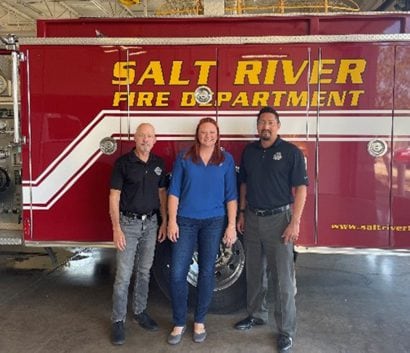Kirsten VanDeventer

Kirsten VanDeventer, MPA
Emergency Management Coordinator
Salt River Pima-Maricopa Indian Community
How did you get involved with PHEP?

I first interacted with PHEP during H1N1 in Idaho. At that time, I served as a volunteer coordinator in an internship for Southeastern Idaho Public Health. My role was to work with the Medical Reserve Corps to set up a vaccination clinic at Idaho State University for students and their families. Although it was nothing like COVID-19, this role sparked my interest in public health.
What attracted you to the public health preparedness field?
I worked in emergency management for about 10 years. As public health became more important in responses related to terrorism, flooding, wildfires, and winter storms, I realized that public health preparedness seemed to fit my drive to serve the public and give back to the communities I live and work for.
Describe your first day working in public health preparedness. What was your role?
My first day in public health was an administrative nightmare. I immediately dove into Centers for Medicare & Medicaid Services (CMS) protocols and Occupational Safety and Health Administration (OSHA) regulations. I was trying to get the tribal health care clinic up to standards.
What do you do now on a day-to-day basis related to PHEP activities?
Today, my role at the Salt River Pima-Maricopa Indian Community (SRPMIC) is to
- build an incident management team.
- ensure we stay up to date on the latest infectious diseases.
- work closely on innovative and motivating solutions to educate the public and tribal community.
- ensure partners and stakeholders are active in our day-to-day public health preparedness.
How has PHEP supported preparedness in your jurisdiction? What’s the most significant impact PHEP has made in terms of your jurisdiction’s ability to respond to a public health threat?
The PHEP role sits in the fire department’s emergency management division. That might sound a little backward, but it allows me to directly impact the overall preparedness of the tribal community.
Before COVID-19, SRPMIC lacked a public health program. We built it throughout the response. We began with points of dispensing (PODs) workshops, we held exercises, and then we brought our tribal Health and Human Services department up to regulations on CMS preparedness requirements.
As the PHEP program grew, we created a Committee for Public Health Emergency Preparedness (C-PHEP). C-PHEP advises the Tribal Executive Response Commission (TERC) on gaps in preparedness.
Once COVID-19 hit, we mobilized and brought in an incident response team from C-PHEP. We hired an epidemiologist using COVID-19 supplemental response funds. We established a public health office using CDC workforce development funds. We also supported the transfer of five staff from other departments into a public health division under our Health and Human Services department. These staff supported contact tracing using COVID-19 supplemental response funds.
How do you hope to make a difference in the field? How might PHEP help you reach this goal?
I hope to bring education programs to the tribal nations that lead to equity in health. I believe that I can have the greatest impact by providing new solutions to old problems. For example:
- Providing naloxone distribution at PODs and QR codes linking to videos on how to recognize signs of an overdose and dispense naloxone.
- Bringing puppets that look like the COVID-19 coronavirus into the schools to educate students on handwashing and what getting a vaccine is like.